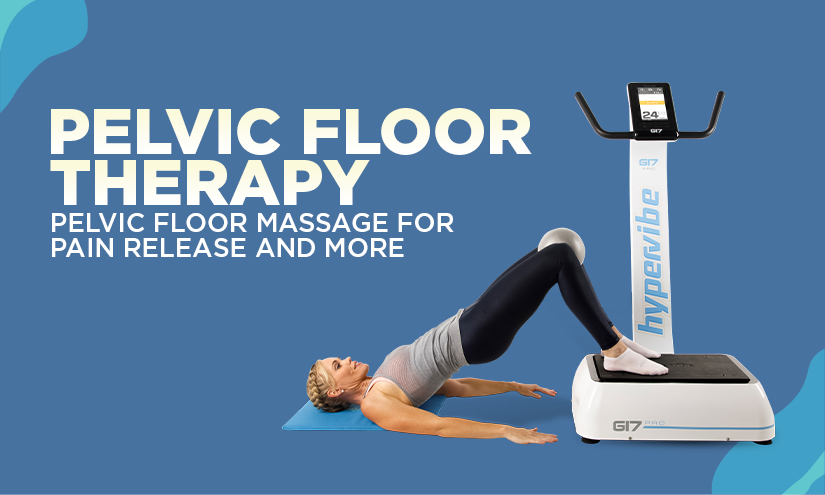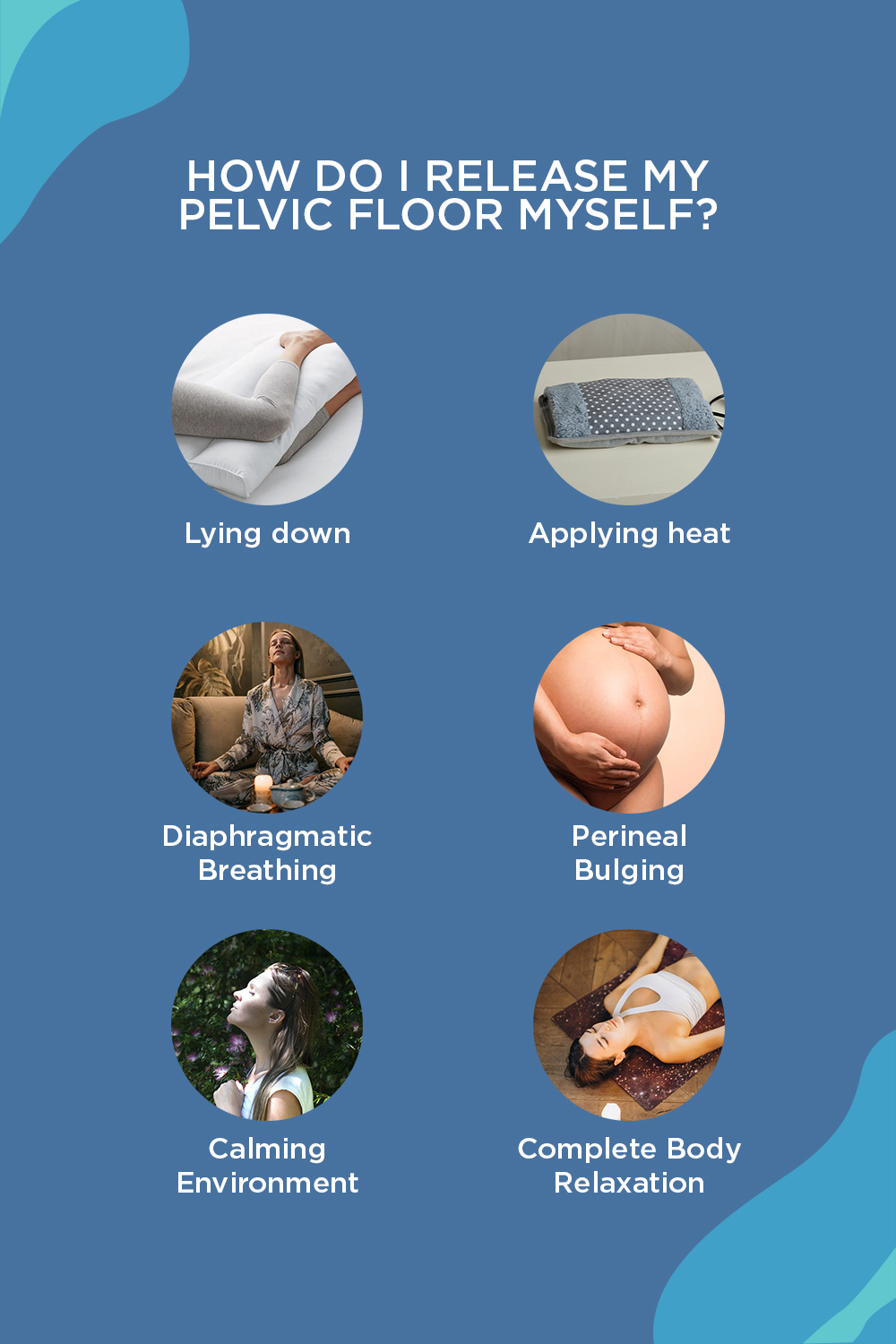Pelvic Floor Therapy: Pelvic Floor Massage For Pain Release and More

Pelvic floor massage is a specific form of physical therapy that can cure the lingering pain and other symptoms that are caused by pelvic floor dysfunction. Pelvic floor massage can also help prevent these symptoms from occurring in the first place. It is helpful throughout the entire nine months of pregnancy, as well as during labor and delivery after the baby has been born.
The concepts of physical therapy are utilized in the retraining of the muscles that make up the pelvic floor in order to ensure that the process is methodical, effective, and risk-free. The treatment aims to improve the strength and function of the pelvic floor muscles while simultaneously reducing pain as well as muscle weakness and dysfunction.
During the course of treatment, a trained physical therapist will conduct manipulations on the muscles through the vaginal or rectum canal in order to improve the strength and functionality of the muscles. The therapist may opt to stretch the muscles if they are short and tight, but if they are weak and dysfunctional, they may choose to strengthen the muscles through resistance training.
What is pelvic floor massage therapy?
The area inside of your pelvis that stretches from your pubic bone to your tailbone is called the pelvic floor (coccyx). Layers of muscles and connective tissue form the pelvic floor. These elastic tissues are created around your vagina, urethra, and anus. It’s important to keep in mind that the pelvic floor serves many purposes, including but not limited to:
- Pregnancy support that helps keep your bladder and bowels healthy.
- Facilitating regulation of bowel and bladder function.
- Aiding in the formation of the structures that keep your spine in place.
- Making for more satisfying climaxes during sexual activity.
- Preventing constipation and incontinence Facilitating proper baby head positioning during birth.
Strengthening the structures of your pelvic floor is one goal of pelvic floor massage, a type of physical therapy. Pelvic floor rehabilitation can be accomplished in a variety of ways. They might be as straightforward as doing some exercises every day to as complex as undergoing surgery.
How do you massage your pelvic floor?
Pelvic floor massage for the pelvic floor may be helpful for reducing stress there. Before attempting a pelvic floor massage on your own, talk to your doctor. Preparing your perineum for labor with a pelvic floor massage like this can help prevent tears during delivery.
After a warm bath or shower, some people find it easier to relax and enjoy a vaginal massage. Then, do as follows:
- It’s time to get the soap out.
- Get yourself into a safe and quiet spot.
- The perineum and vaginal opening should be massaged with a tiny amount of oil.
- Apply light, even pressure with your thumb inside your vagina and your index finger outside, stretching the skin as you massage from side to side.
- If you keep pressing, you should start to feel a gentle tingle.
- If you’re in discomfort, you should stop massaging.
- Massage your vagina in a “U” shape, with pressure directed toward your anus, by gently inserting your thumb two to three cm within.
- Daily massages of roughly 10 minutes are recommended.
How do I release my pelvic floor myself?
Tightness in the pelvic floor is frequently the root cause of conditions that result in chronic pelvic pain. It is estimated that as many as one in seven persons suffers from persistent pelvic pain, and those individuals may spend years looking for an adequate explanation and diagnosis for their discomfort.
For a variety of causes, the pelvic floor muscles, which form a sling-like set of muscles that support the pelvic organs, might become tight or limited. In some cases, the limitation in the pelvic floor muscles is the result of poor posture, a fall, an accident, surgery, or mental stress. Other times, the restriction is the result of physical activity.
People who are stressed are more likely to tighten their pelvic floor muscles in an unconscious attempt to protect themselves, which can produce trigger points, also known as knots, in those muscles.
The good news is that it is possible to release the muscles by doing gentle pelvic floor stretches, by using a trigger point release wand, and by practicing relaxing the pelvic floor.
A strain on the muscles of the pelvic floor is referred to as a spasm. Methods of treatment, such as self-care measures to implement at home, are described in detail below.
Lying down
The weight of your abdomen is lifted off your pelvic floor by lying down with a pillow under your knees or resting on your side with a pillow between your legs. Your pelvic floor is loaded when you are standing up.
By avoiding prolonged standing or sitting, you can relieve the strain on your pelvic floor. When paired with a warm pack, unloading your pelvic floor muscles can provide instant pain relief.
Applying heat
Applying a warm pack to the pelvic floor can typically provide immediate pain relief. Heat treatment has been shown to improve pelvic floor pain in studies.
Pelvic floor muscles can be relaxed with mild heat administered to the outer pelvic floor. Over the pelvic floor, use a warm pack or a gentle heating pad (outside your briefs). You can use the heated pack for 15 to 20 minutes at a time. The heated pack should be applied while lying down with a pillow under both knees.
When paired with a warm pack, the pelvic floor muscle relaxation strategies can provide rapid relief.
Diaphragmatic breathing
Diaphragmatic breathing entails taking long, slow breaths into the abdomen rather than the chest. It is essential to practice slow, diaphragmatic breathing (similar to the breathing used in yoga) in order to relax the muscles of the pelvic floor.
Perineal bulging
Pelvic floor physiotherapists will instruct patients on how to perform gentle pelvic floor bulging. Because applying too much force to the area can actually make the spasm worse, this step needs to be taken very carefully.
Calming environment
Selecting a setting that is conducive to relaxation can help a person feel more at ease throughout their entire body. This can include things like gentle music, a warm climate, or a light covering placed over the body.
Complete body relaxation
A common practice that goes hand in hand with relaxing the pelvic floor is relaxing the rest of the body. This procedure may involve gradual relaxing of the various muscles of the body, starting from the face and neck and working all the way down to the feet.
Is pelvic massage a thing?
Pelvic floor massage is utilized during pelvic physical therapy in order to loosen and stretch the pelvic muscles. Either you or a professional pelvic physical therapist can manually relax the flesh using a vaginal wand.
You also have the option to have the procedure performed by a licensed pelvic physical therapist. Pelvic wands and vaginal dilators are other names for the same thing as vaginal wands.
In physical therapy, stretching the muscles helps to strengthen them, which in turn contributes to the myofascial release that occurs as a result of the stretching. All of these things work together to assist increase the strength of your pelvic floor muscles and the diseases that are associated with their deterioration.
Pelvic physical therapy is helpful, but persons who want to enhance their sexual health may also benefit from combining it with other treatment modalities, such as medication, biofeedback, or counseling.
Sources:
https://flo.health/getting-pregnant/preparing-to-conceive/health-when-planning-to-conceive/pelvic-floor-therapy
https://dynamicphysiotherapy.ca/blog/massage-therapy/how-massage-therapy-can-help-with-your-pelvic-floor-dysfunction/
https://www.fyzical.com/sarasota-downtown/blog/What-is-Pelvic-Floor-Physical-Therapy#:~:text=Pelvic%20floor%20therapy%20is%20targeted,in%20bladder%20and%20bowel%20control.
https://www.pelvicexercises.com.au/pelvic-floor-muscle-tension-article/?v=fbd1e7ba9564&c=22783a5940ef








